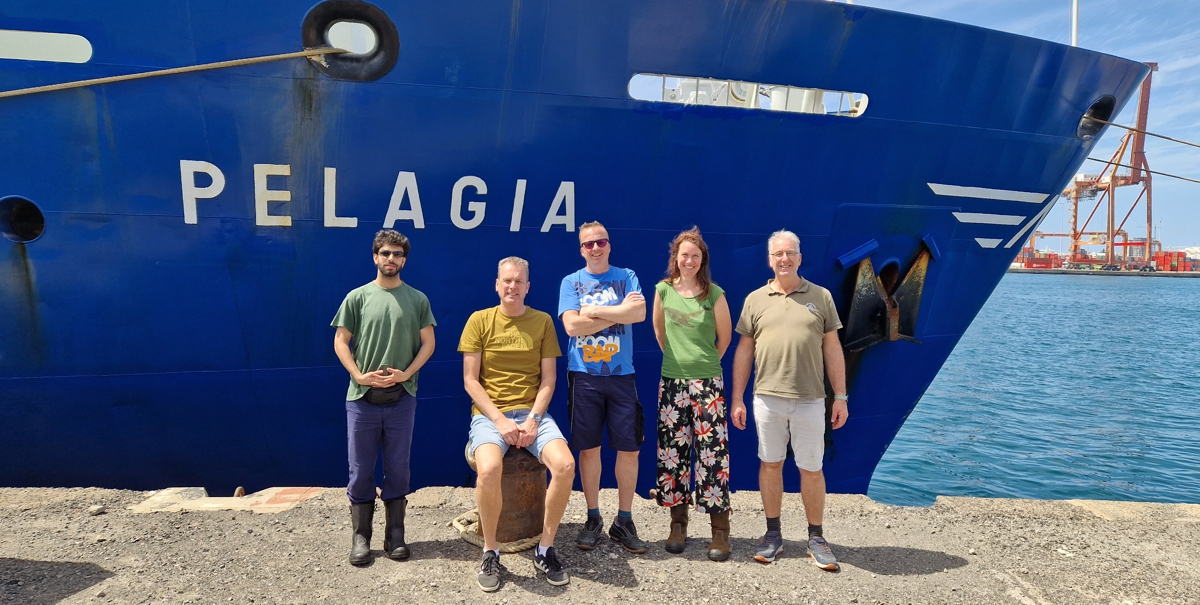On Monday 17 March 2025, a relatively small group of NIOZ and Utrecht University colleagues will board RV Pelagia to start expedition 64PE550 - DUST2025. Just outside the southern EEZ of Cabo Verde, they are hoping to recover both dust-collecting buoy Laura as well as high-resolution sediment-trap mooring M1. In February 2025, during RV Pelagia 64PE540 - TipTop, the weather and sea state did not allow the recovery of these two moorings. Thanks to a lot of flexibility and creative planning, the present short additional expedition could be squeezed into the ship's busy schedule, and this time we hope that Neptune will allow us to recover and re-deploy both the buoy as well as the sediment-trap mooring.
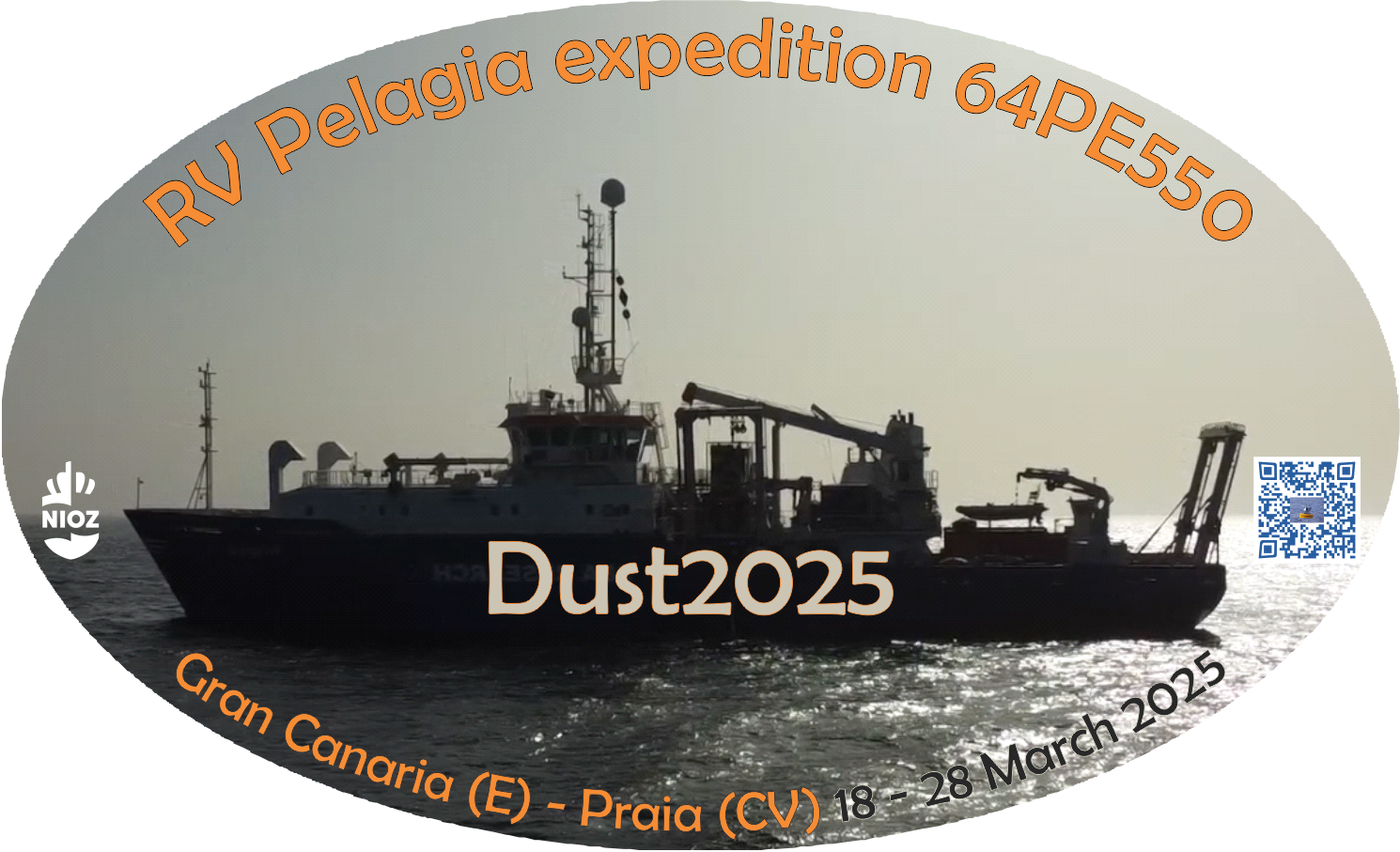
February 2025 has been a very dusty month indeed offshore Mauritania and we are hoping to see some more dusty skies and nice sun sets. Foremost, we hope to be able to collect good samples and 'harvest' the dust-collecting instruments.
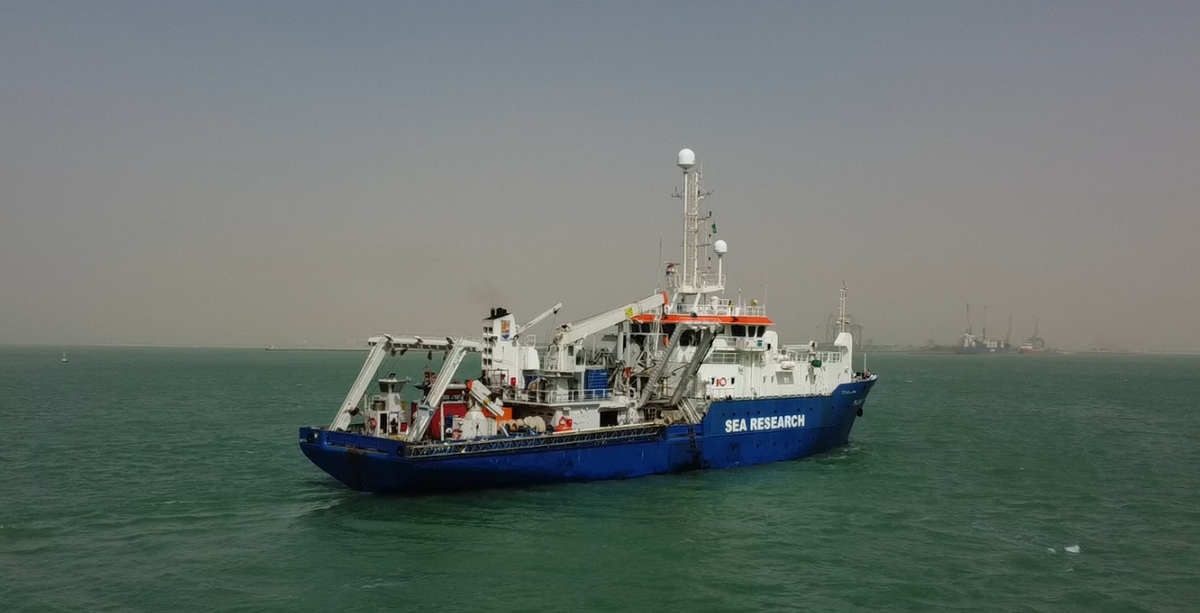
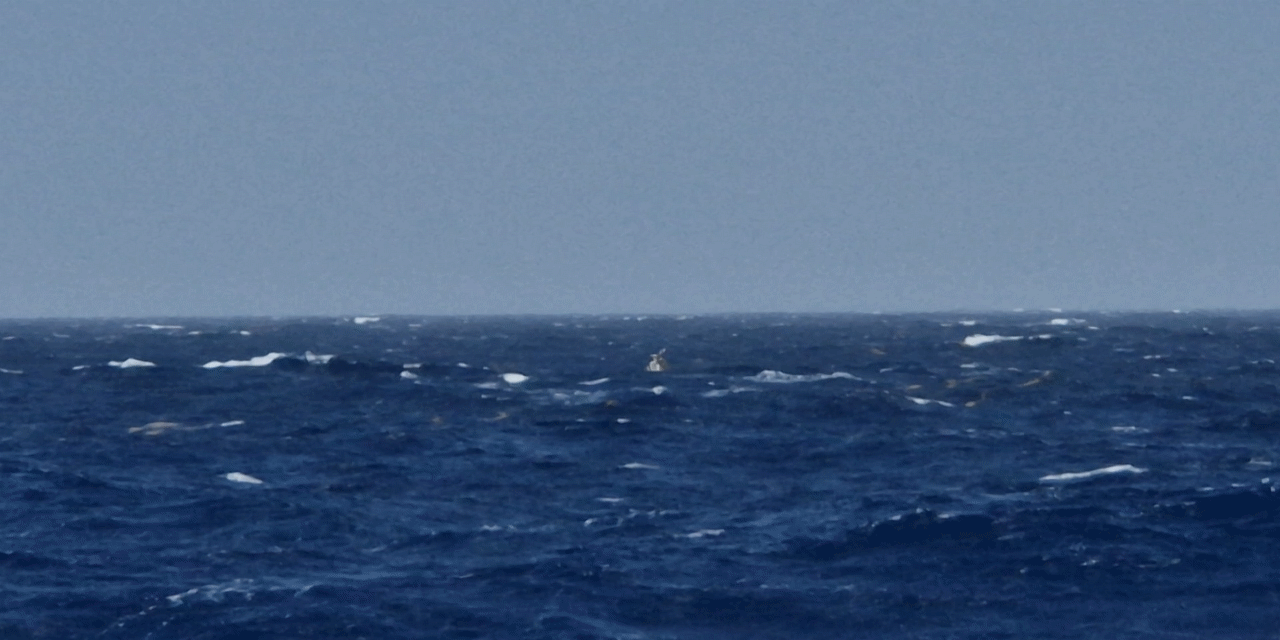
As you can see in this little clip, there was no chance to recover buoy Laura in the weather conditions last month. We hope to have calmer conditions this time!
In this blog you can follow our whereabouts and adventures at sea. Updates will be posted regularly below this line, the most recent one on top.
28 March - Land ahoy!
We are approaching the capital of the Cabo Verde Islands: the city of Praia on the island Santiago. From here on, most of the science party will fly home. We look back on a very nice and successful expedition and thank the captain and crew of RV Pelagia for their professional work environment and very pleasant atmosphere onboard the ship. We are a tick sad to say goodbye to the lovely little blue ship and look forward to coming back to this area on the brand new RV Anna van Weber Bosse, for more dust.
Thanks for following this blog, for more dusty updates, please see NIOZ's dustiest webpage: www.nioz.nl/dust
#welstoffignietsaai
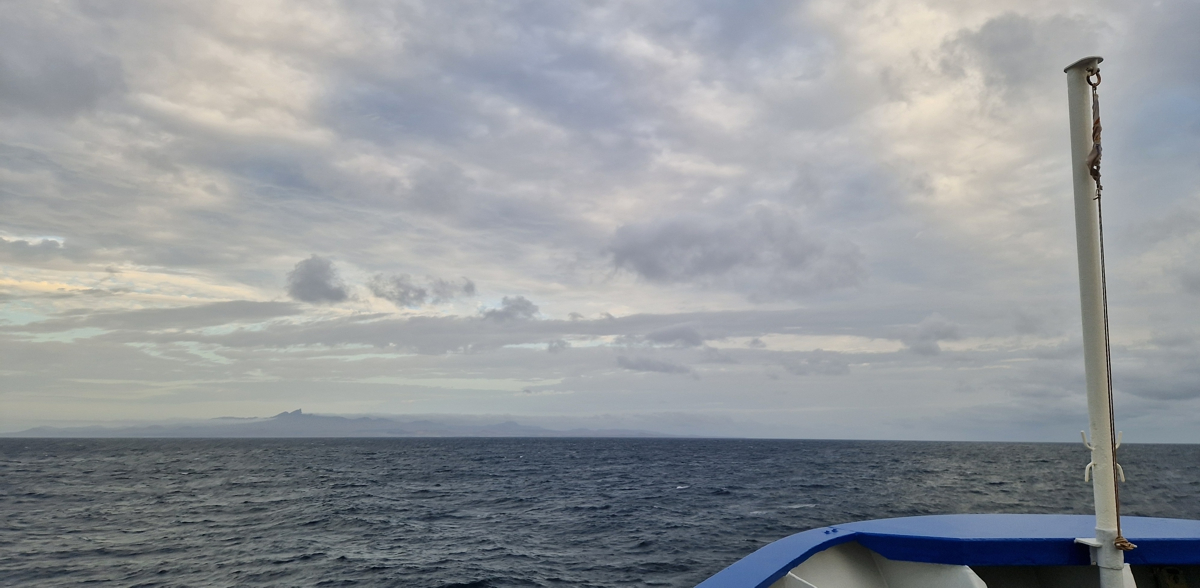
27 March - calm seas, little dust
We leave behind buoy Laura in relatively calm conditions and with little dust in the atmosphere. According to the forecasts of different meteorological models, more dust will be coming soon. We hope to recover the buoy in about one year, and with our new research vessel.
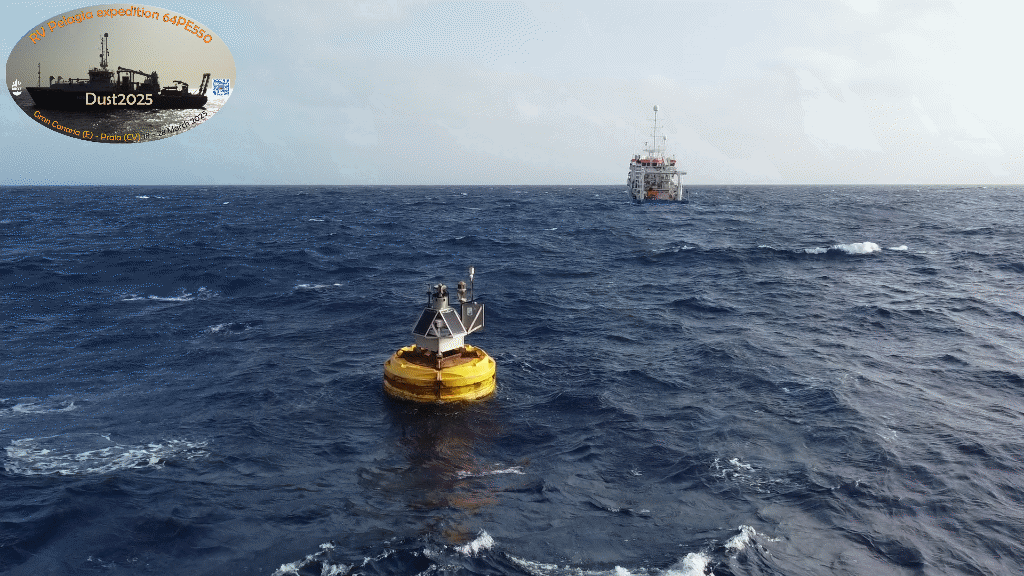
27 March - dust forecasts
Here you will see the forecasts of Windy.com are animated into a little clip that covers the period that we sailed down from Gran Canaria to the buoy position. At the moment (27-28 March) we are sailing north towards Praia through clear skies again.
27 March - filming in 360°
Throughout the last week, Emma and Goncalo have been filming with their 360° camera. They filmed both many aspects of this expedition as well as specifically about dust research and foremost for the so-called "virtual ship classroom". The videos will be integrated with their open source lesson material to teach (graduate) students about sea-going research. See their website.
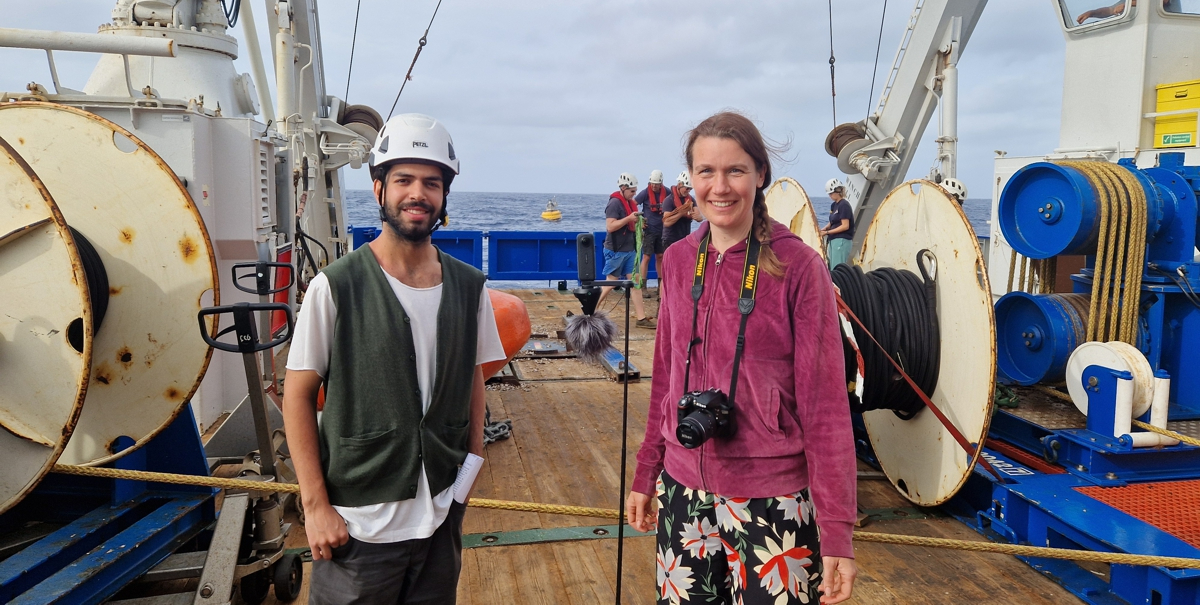
27 March - deploying buoy Laura
At the break of day we start the search for the top smartie, which indicates the position of the buoy's anchor and mooring line. At 7.00 we are alongside the smartie and the exchange for the "real" buoy has started. Just one-and-a-half hour later, buoy Laura is re-deployed! Happy sampling and see you next year!
26 March - last night on deck
The re-deployment of an anchored buoy is quite a long process since the large water depth (>5km!) requires a lot of lines. The entire set up includes kilometers of nylon line, a smartie (float with a buoyancy of 500kg), rubber stretching lines (to minimise the forces exerted by wind and waves), steel cable (to prevent damage by fishing lines) and metal chains. Because there was some delay with the deployment, we could not take the final step of deployment, and therefore, buoy Laura will be standing on deck for one more night. On deck, she looks quite big but as soon as she is floating on her own in the ocean, she looks very tiny.
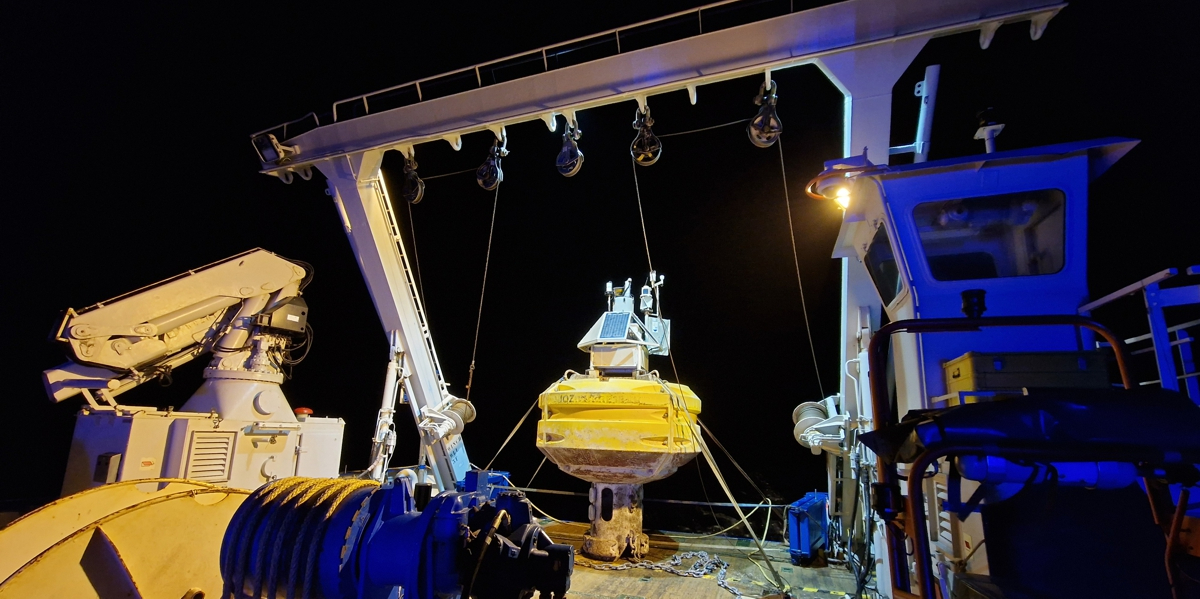
26 March - drifting traps
At this station, we have deployed and recovered a set of drfiting traps to study the effect of dust particles on the ocean. We both want to know if --and: how much-- phytoplankton responds to the nutrients in the dust as well as how much of the organic material that is produced in the surface ocean, actually is exported towards the sea floor.
The drifting traps consist of four tubes that are suspended in a frame in such a way that they are always oriented vertically. We have four tubes at 100m, 200m, and 400m. In one of each set of four tubes, we placed a petri dish with a transparent gel. This is the only way to collect and preserve so-called "marine snow" particles. These "snow flakes" are very loose aggregates of particles (for example: dust particles but also remains from phytoplankton) that slowly sink through the water column towards the sea floor. They are held together by organic sugars but fall apart as soon as they are even touched. We think that these snow flakes play a crucial role in the transport of organic matter to the sea floor and therefore, we would like to study them for composition and sinking speed.
The contents of the other three tubes are filtered, to be analysed in the lab back home.

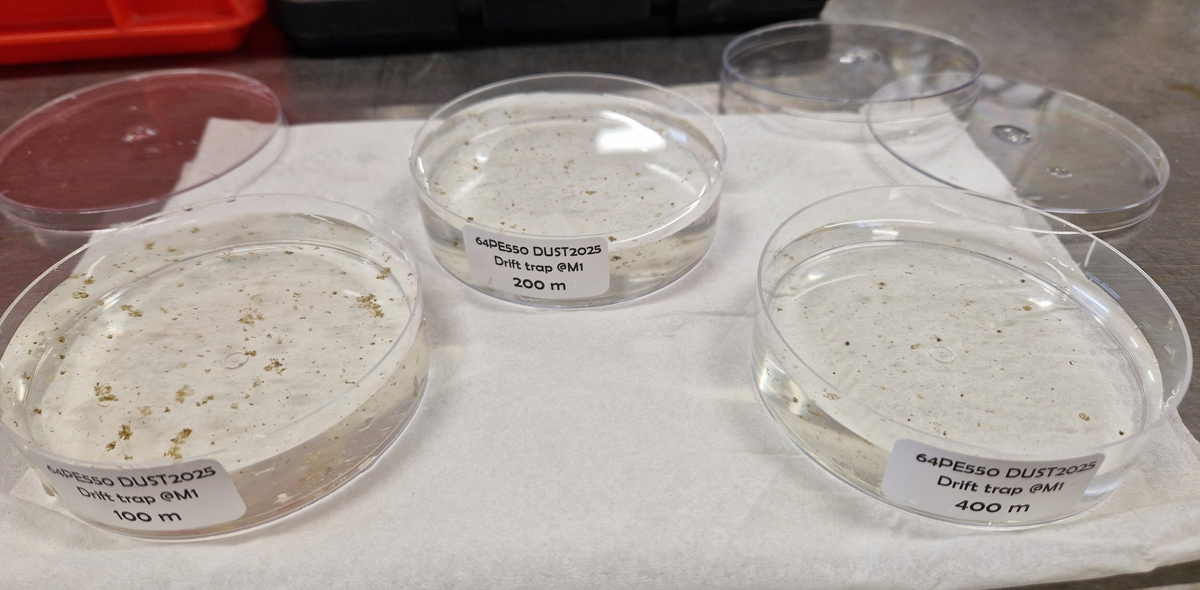
25 March - dust collected from the air
In case anyone had doubts about why exactly the skies are hazy, the filters from the high-volume samplers on the top deck of RV Pelagia provide the anwer; after a tick over 24 hours, the ~A4-sized pristine-white filters transformed to a bright orange colour. Using satellite imagery and back-trajectory calculations, we will be able to reconstruct from which dust source(s) in northwest Africa this material came.

24 March - dust is in the air!
We keep getting reports of Saharan dust being observed in the Netherlands, causing red sunsets and dirty cars. Here we are getting our share here as well. In Europe the amount of particles is much less and light of the setting sun is scattered into nice red sunsets. Here, the amount of particles suspended in the air is much higher causing the sun to be completed obscured already long before hitting the horizon. Compare this sunset to the one posted three days ago.
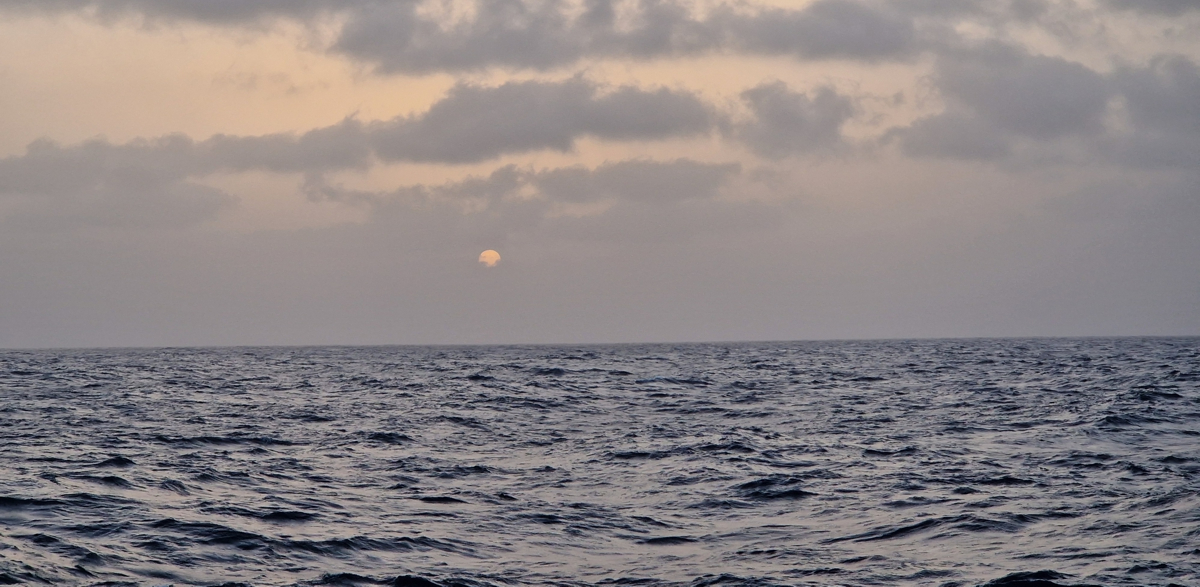
24 March - sediment-trap day
Today we are going to recover the second mooring: the one with three sediment traps. These traps are a construction of a funnel with which we can intercept material (both dust as well as organic material, such as plankton remains) that is settling from the surface ocean to the sea floor. The unique set up of three traps allows an unprecedented high sampling resolution of four days. This way, we can "collect" the result of individual dust outbreaks and their marine environmental consequences thereof. We have already shown how indeed phytoplankton responds to the nutrients brought with the dust and also how the settling dust particles speed up the settling of organic matter to the sea floor.
On the photo below one can see how the first trap is already standing on deck and the second one is about to be put on deck. Each trap has two carrousels and one can see how each bottle of each carrousel contains a little bit of material: that's how we like it!
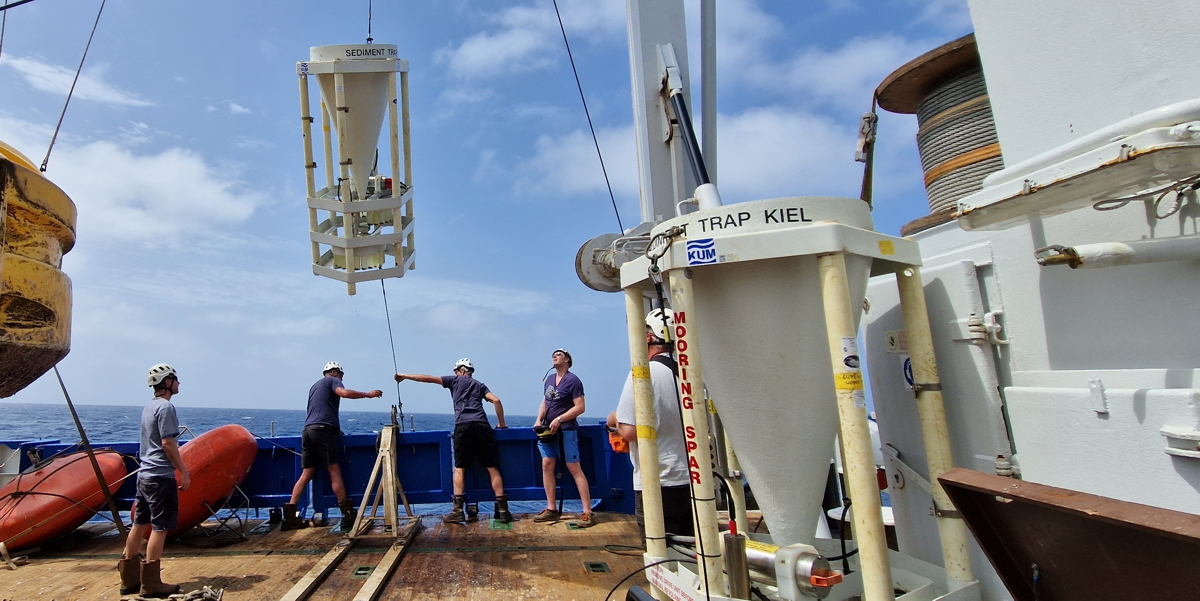
23 March - harvesting the buoy
Dust is being collected in two ways by the buoys; wet-deposited dust is collected by swinging open a lid over a funnel leading into bottles at the first drops of rain and dry dust is pumped over a 47-mm filter only in the absence of rain and only if the wind is not too strong, to avoid sucking sea spray into the system.
Just as the filters are rotated under a chimney when the buoy is at sea, we rotate the full filters under an opening through which the filters can be retrieved. Here you see how filter nr1 is nicely coloured with dust. Oddly satisfying....
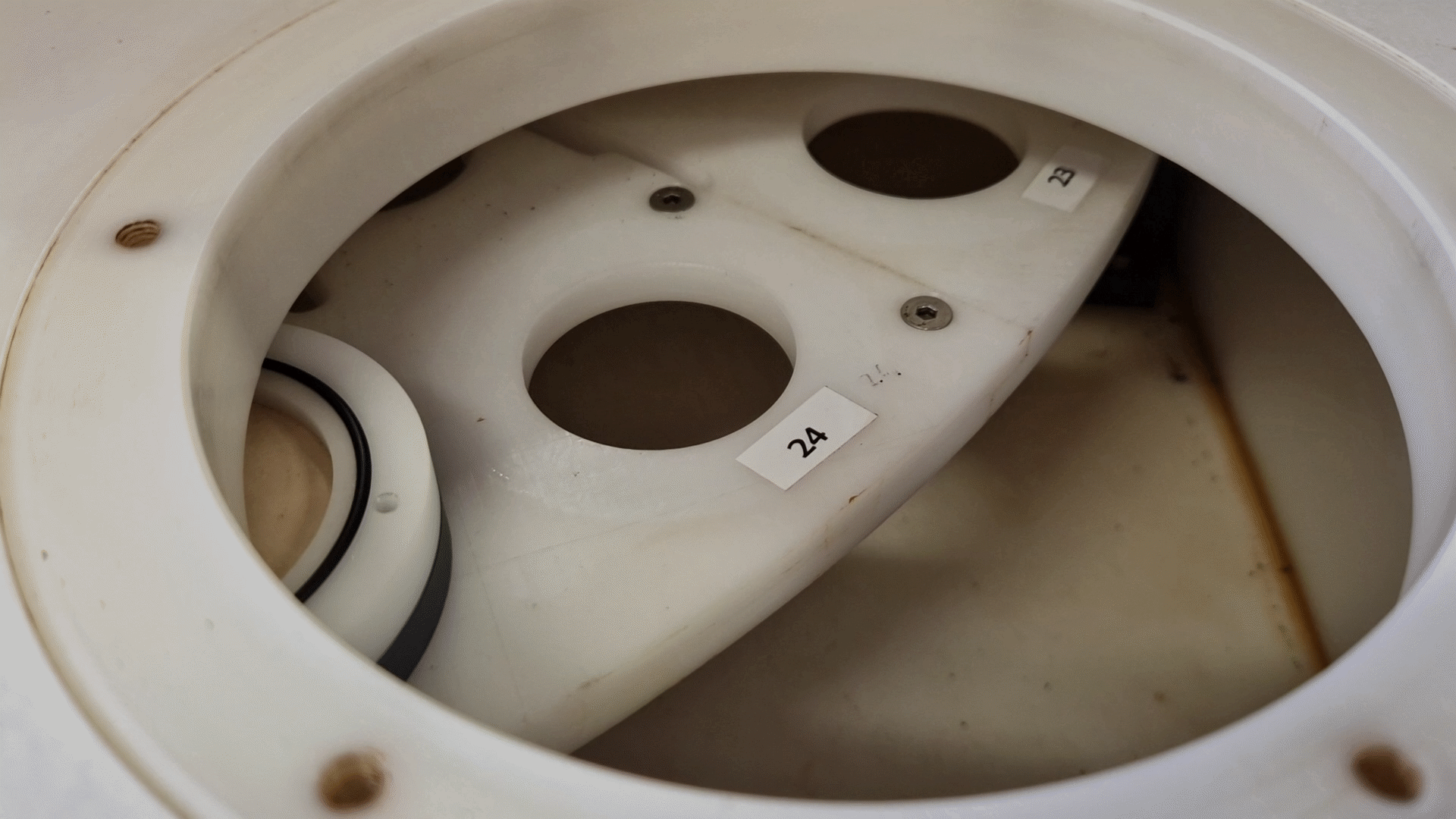
23 March - recovering buoy Laura
Fortunately, the weather and sea state have improved considerably, so that it is safe to use the dinghy to attach lines to the buoy to get her on board the ship. In this videoclip one can see how the swell still causes the ship, dinghy and buoy to move considerably but the skilled officers and crew of RV Pelagia made the opreation run very smoothly and within an hour, the buoy was standing on deck.
22 March - buoy ecosystems
It is said that the shadow that the buoys create in the water already attracts life in the surface ocean. The buoys typically are overgrown with algae and barnacles, and contain all kinds of crabs and other critters. These are eaten by little fish, which are again eaten by bigger fish, all the way up to BIG fish like the Mai-mai seen in this video that was filmed in 2017 onboard RV Meteor during M140. Would you dare go for a swim here? We will spend a few days at this station and are hoping to see (and catch?) some fish as well.
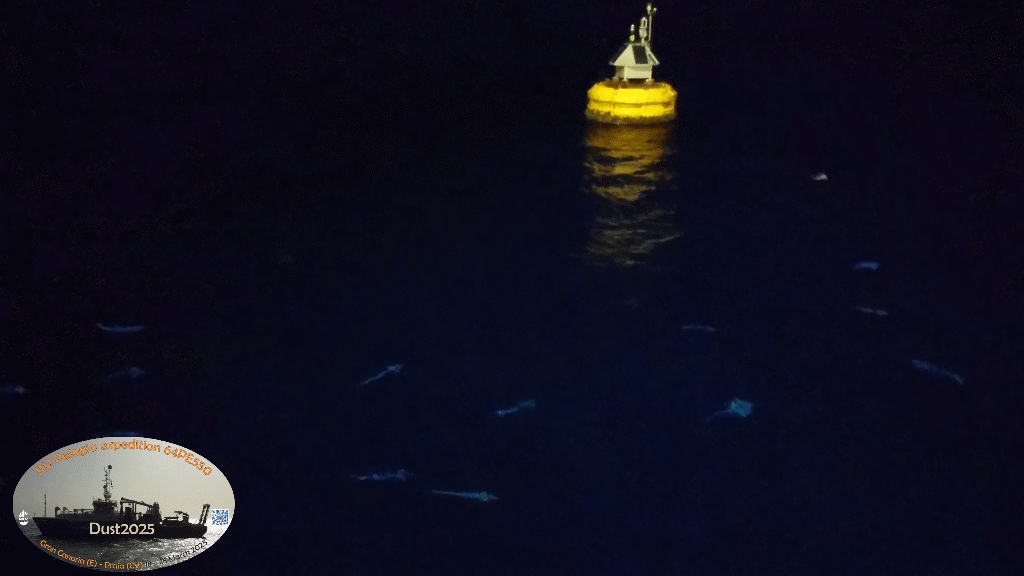
22 March - toolbox meeting
Tomorrow we will arrive at the goal of this expedition: station M1 / buoy Laura. The first thing we plan to do --provided the weather and sea state permit this time-- is to recover buoy Laura. To hit the ground running, we prepare for this by examining footage of previous recoveries of the dust-collecting buoys and discuss the order of events.
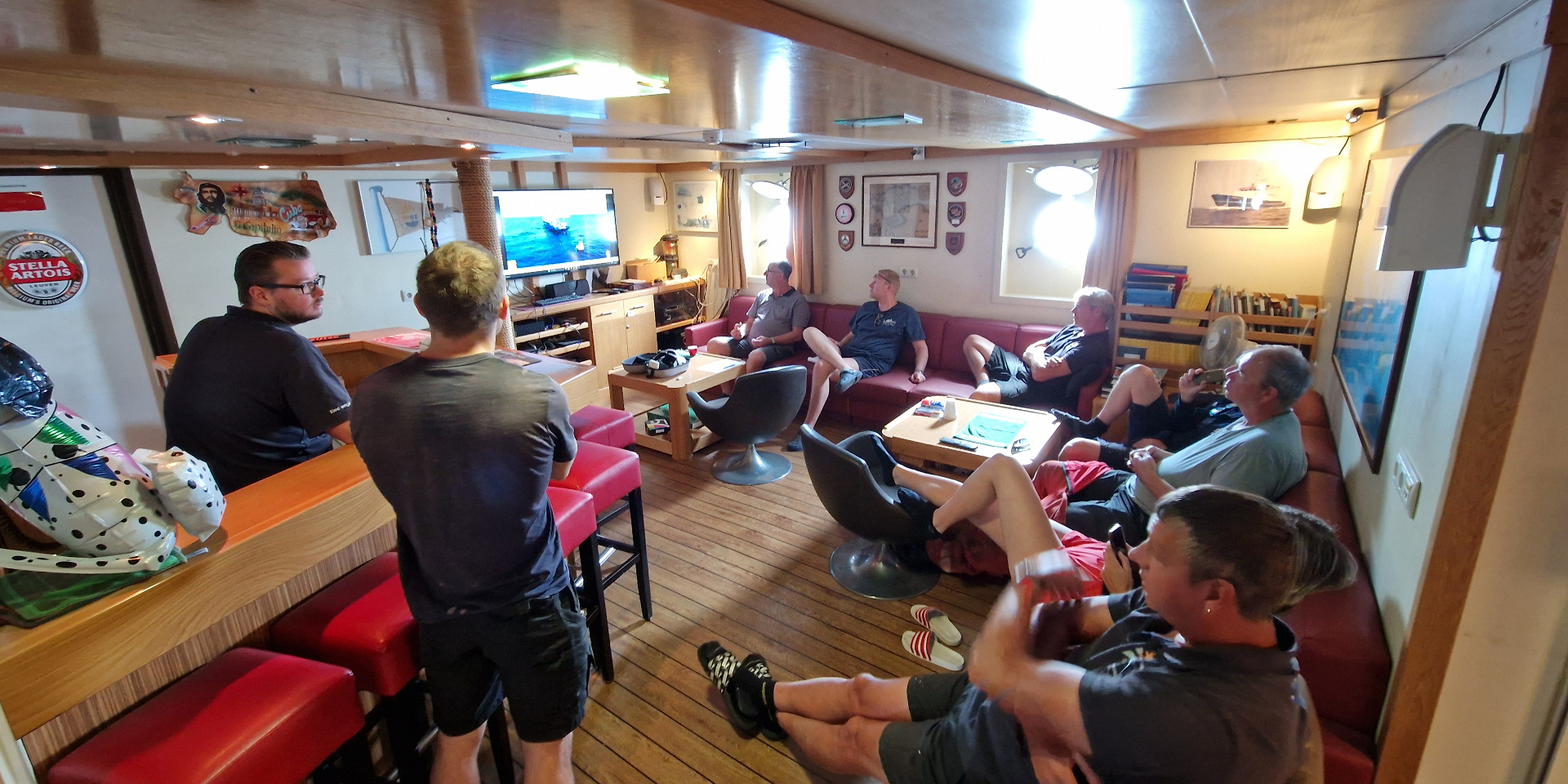
22 March - meanwhile on Texel....
The forecast by Windy.com appears accurate; a large northwest African dust outbreak made it all the way up to northern Europe and once again, cars in the Netherlands were covered in a thin layer of dust. This photo was taken on the island of Texel, more than 2,000 km from its source.
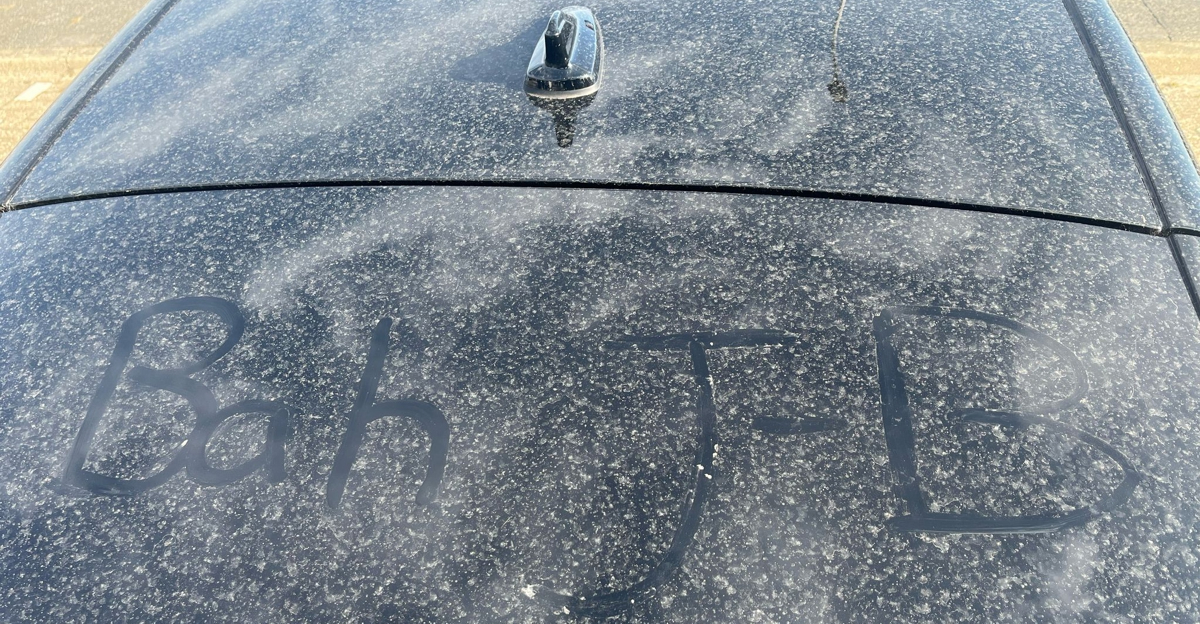
21 March - preparing for station M1/Laura
We are using the few days' transit to prepare for all the activities we will do once we are at station. Here you see Emma and Marcel, assembling the frames for the so-called drifting traps; three sets of four tubes that intercept material settling through the ocean while drifting freely in the ocean for 24 hours.
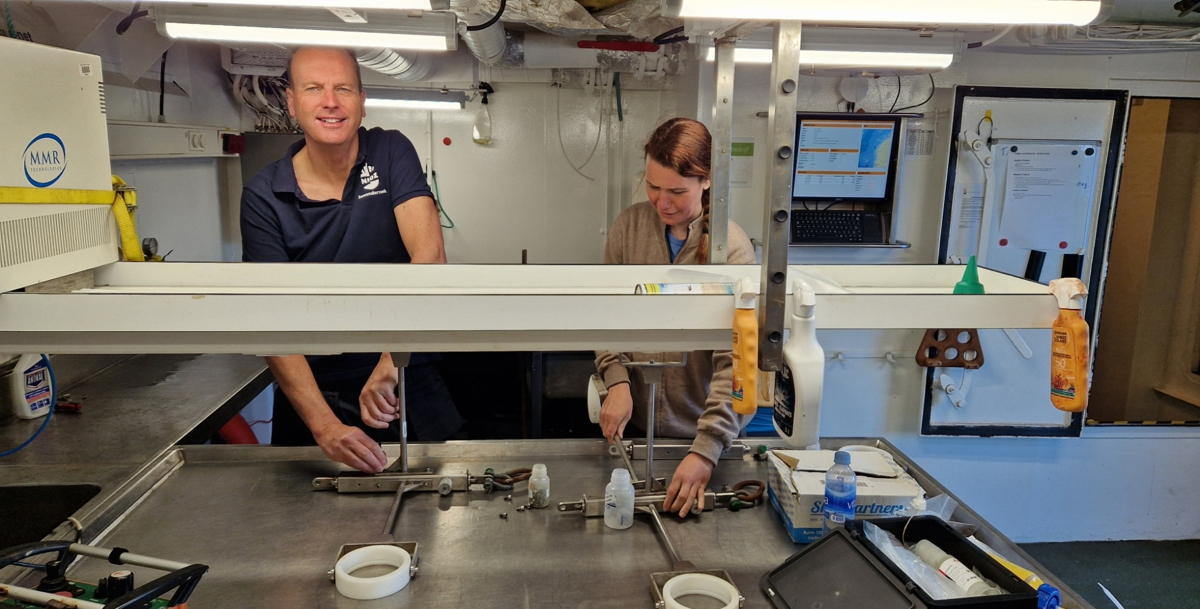
21 March - last dustless sunset?
Sunsets at sea are usually spectacular, sometimes even more so due to the green flash.
Last night's sunset was a beauty again and we realise that this may have been the last time we have actually seen the sun set into the sea (and if you listen closely....). According to the satellite images, and forecast by Windy.com, the next few days we will be sailing through a cloud of dust, meaning that the sun will probably be obscured already before touching the ocean at the horizon.

20 March - Northwest African dust to Europe
Our main interest in the subtropical eastern North Atlantic is northwest African dust that is blowing in great quantities towards the west. However, sometimes, especially in late winter/early spring, this material is blowing towards Europe too. In this animation of windy.com one can see such a dust outbreak that is blowing north across the Mediterranean Sea and all the way to northern Europe, to reach the Netherlands on Friday 21 March. We could have stayed home....
#whatarewedoinghere

20 March - blue skies (no dust)
The area we are sailing through has very clear and blue skies; no dust to be had here. According to the forecast by the Windy app, supported by NASA satellite images, further south we are very likely to encounter dust blowing off the northwest African continent. On the top deck above the bridge, we have installed two so-called high-volume dust collectors that filter large amounts (`1m³/minute) of air. These filters are exchanged every day or more frequent in case the atmosphere contains a lot of dust.
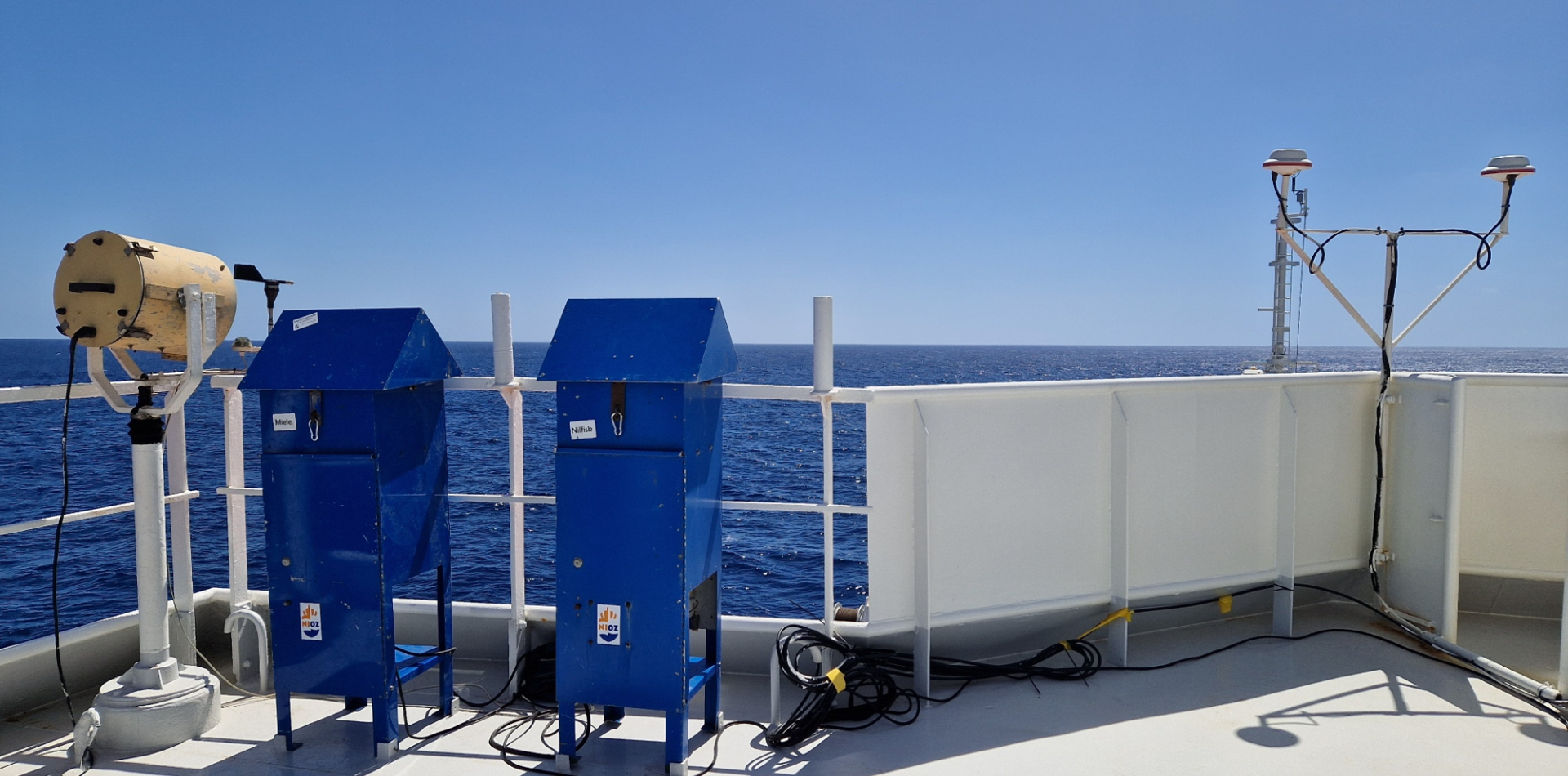
20 March - preparations
At the moment we are sailing southward on a 4-day transit to the position of buoy Laura and the sediment-trap mooring M1, hoping that the weather conditions stay as calm as they are now! Once we will be at that station, we will be very busy with the recovery of the moorings, their maintenance and re-deployment. We are using the transit to prepare for these busy times and on this picture you see filter cups on which new 47mm filters are installed. On the buoy there is a carousel which holds 24 of these cups, which are positioned below the air inlet one by one on a pre-determined interval. Three cups on the table already have a white new filter, which we hope will be filled with orange dust when we collect them again next year, there is ample time to place filters in the remaining 21 cups.
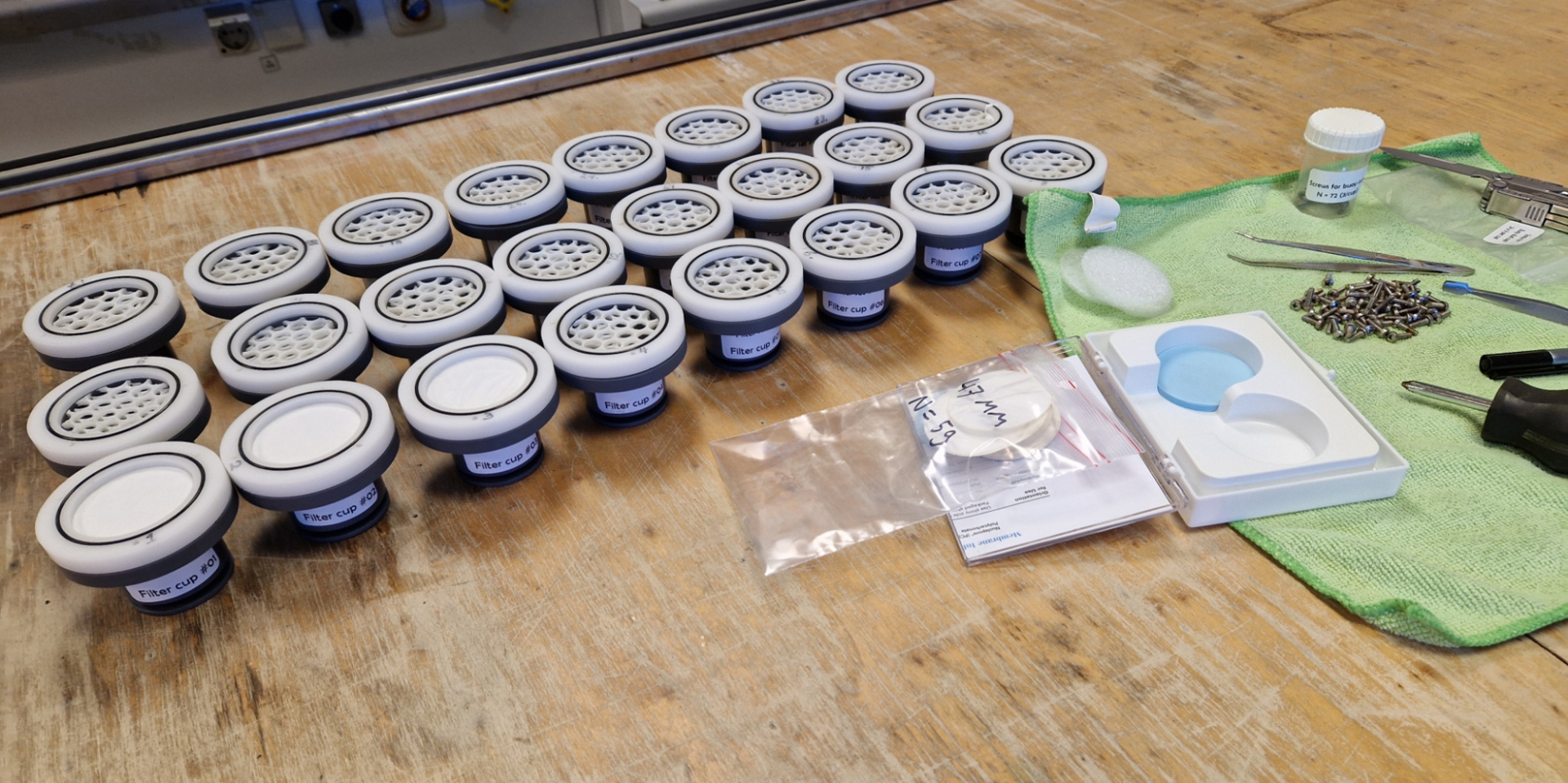
19 March - fair weather and calm seas
We are profiting a lot from the southward Canary Current, which takes us gently and relatively swiftly away from the Canary Islands. We are obviously hoping that the sea state stays like this!
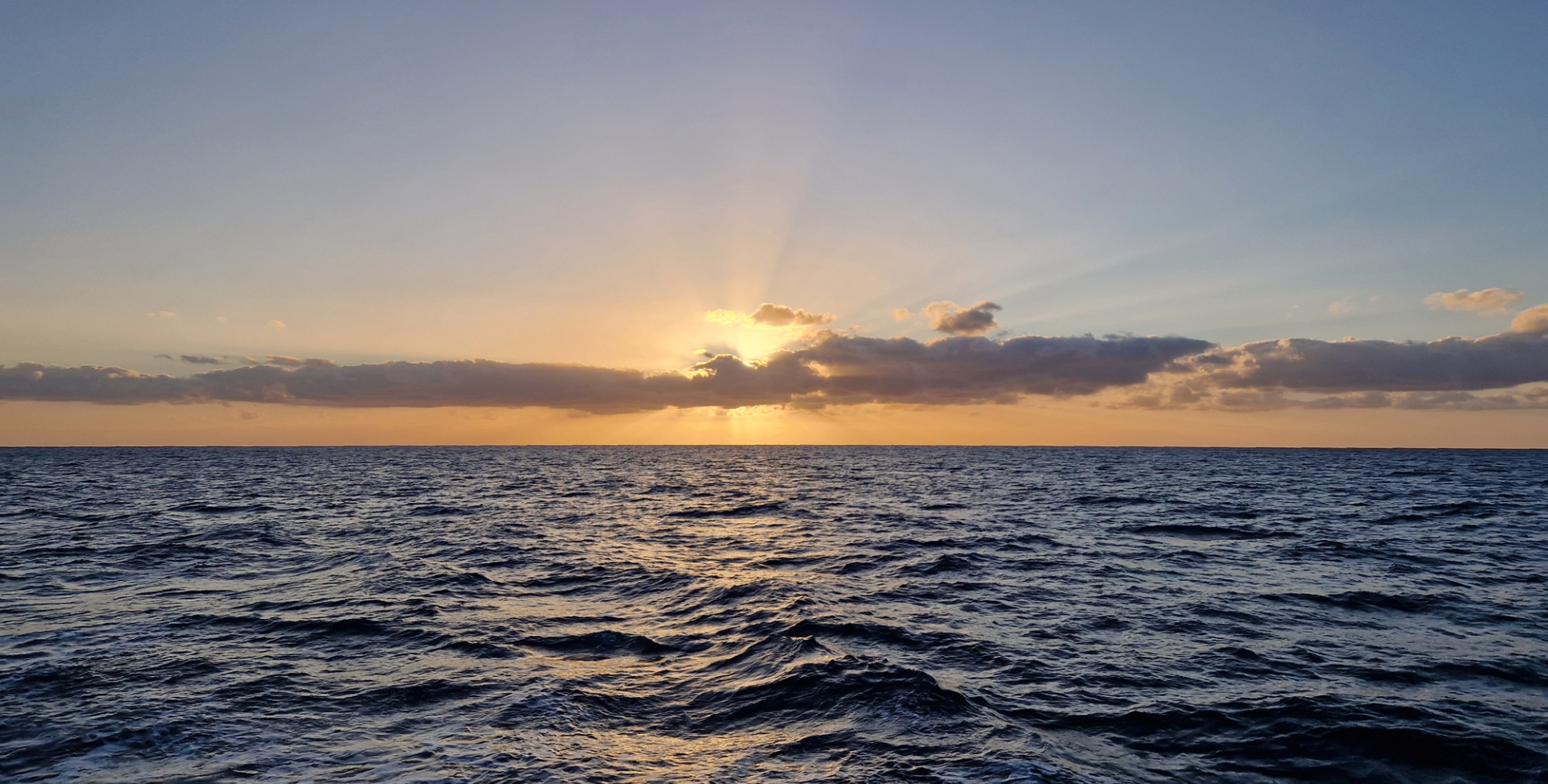
18 March - on our way!
With the pilot leaving us, we are on our own again and ready to set course to our first (and only) station south of Cabo Verde.
18 March - Preparing in Las Palmas
Today our journey is to start and we are all very excited! The last stores have been delivered and after fuelling up we will head South towards the Cape Verde Islands.
Time for our first group picture of the "opstappers" of expedition 64PE550 - DUST2025.
